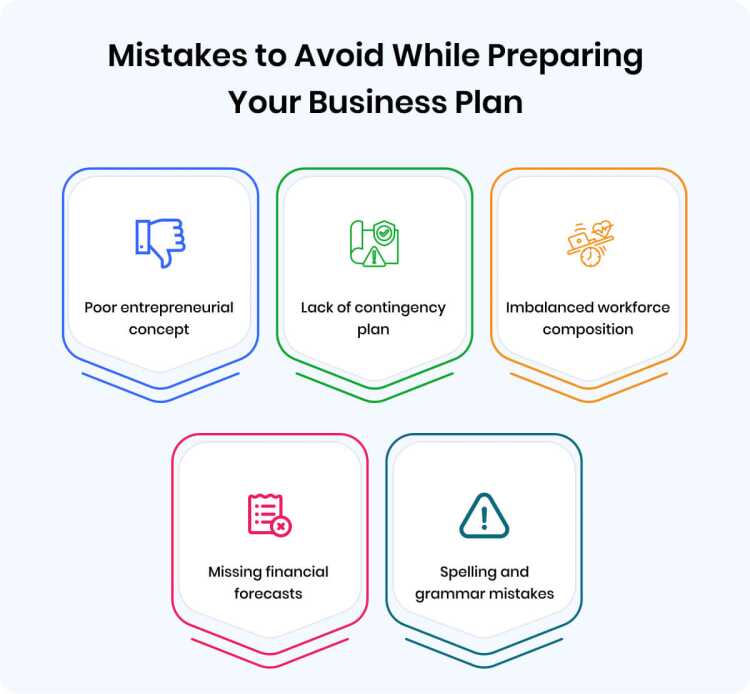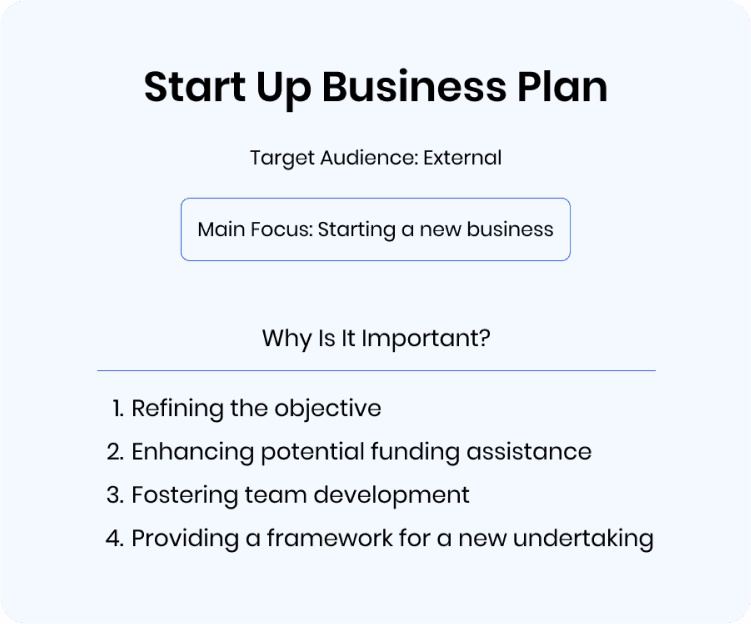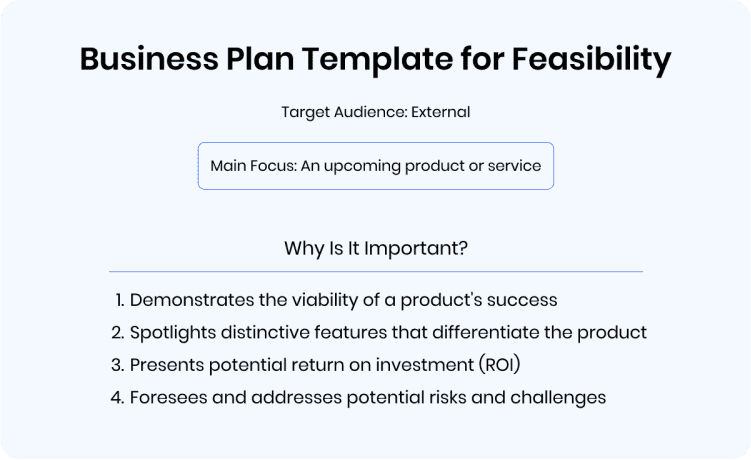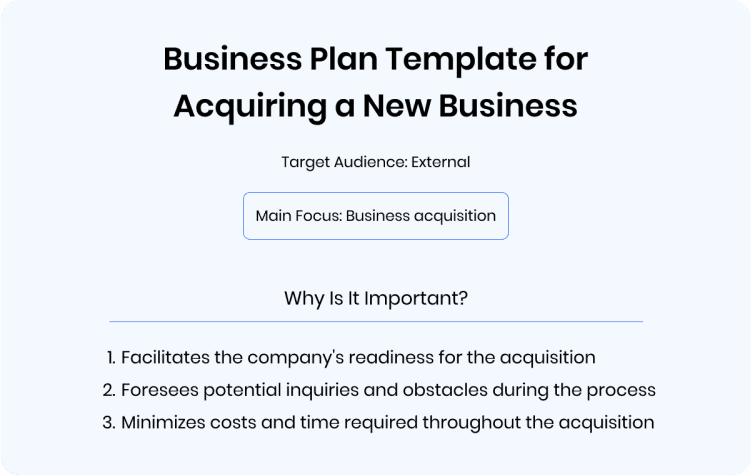Having a well-crafted business plan is essential in today’s landscape, where over 20% of small businesses don’t survive their initial year. It serves as a vital initial stride towards establishing a business for long-lasting prosperity.
If you’ve recently conceived a promising business idea that warrants funding or devised a marketing strategy capable of doubling your company’s revenue, now is the opportune moment to articulate your brilliant concepts on paper using a reputable business plan template.
Within this article, we will elucidate the concept of a business plan, outline its significance, explore various classifications and provide guidance on the essential components to incorporate into your own plan.
Decoding Business Plans: A Roadmap to Success
A business plan serves as a documented roadmap, outlining the goals and strategies of starting a new venture. It encompasses essential elements such as the company’s market strategy, future financial performance, market research, business objectives, mission statement, and the key personnel responsible for achieving the goals, along with a timeline.
Undoubtedly, the business plan plays a crucial role in establishing a company. It plays a pivotal role in unlocking financial support, capturing the essence of your business model, painting a vivid picture of financial possibilities, and turning a mere spark of an idea into a vibrant and thriving reality.
What is a Business Plan Template?
A business plan template is like a trusted companion, ready to embark on the exciting journey of transforming your dreams into reality. It’s a carefully crafted roadmap, a blueprint that provides you with a clear direction, guiding you through the twists and turns of entrepreneurship. This magical template acts as a creative canvas, waiting to be infused with your unique ideas and aspirations.
A simple business plan template typically includes sections and prompts to help entrepreneurs and businesses outline their goals, strategies, market analysis, financial projections, operational plans, and other essential elements.
The template serves as a starting point, allowing individuals to fill in the specific details and customize the plan according to their unique business needs. It offers a convenient and organized format, saving time and effort while ensuring that key components of a business plan are covered.
Why Do You Need a Business Plan Template?
A business plan template is a priceless asset that has the potential to elevate your entrepreneurial journey to new heights. Let me share with you the reasons why having one is an absolute must:
-
Organization and Structure
With a business plan template, you gain access to a well-structured framework that acts as your guiding compass, allowing you to neatly arrange your thoughts, ideas, and strategies. It keeps you on track, ensuring that you address all the vital components of your business plan in a coherent and systematic manner.
-
Time and Effort Efficiency
Crafting a business plan from scratch can be an arduous and time-consuming endeavor. However, a template comes to your rescue, sparing you the need to start with a blank canvas.
By leveraging the pre-existing sections and prompts, you can save valuable time and effort. Instead of grappling with formatting issues, you can focus on filling in the details, tailoring the template to your business needs, and directing your energy toward the substance and content of your plan.
-
Thorough and Holistic Coverage
By leveraging a well-designed template, you guarantee that no vital elements of your business plan are overlooked. The template serves as your prompt, guiding you to address essential areas such as market analysis, financial projections, marketing strategies, operational plans, and more. This comprehensive coverage empowers you to develop a well-rounded and meticulous business plan.
-
Guidance and Clarity
Consider a template as your trusted advisor throughout the business planning journey. It offers valuable guidance and direction by posing relevant questions. This process assists you in clarifying your ideas, setting achievable goals, and defining effective strategies. The template acts as a reliable companion, enabling you to make informed decisions and establish a robust foundation for your business venture.
-
Polished and Professional Presentation
With a business plan template, you can showcase your plan in a polished and professional manner. The template ensures a consistent and coherent structure, resulting in a visually appealing and easily understandable document. This professional presentation greatly enhances your credibility when presenting your plan to potential investors, partners, or stakeholders, leaving a lasting impression of your business acumen.
What to Include in Your Business Plan Template?
This simple business plan template is strategically devised to guide you in thoroughly contemplating every crucial aspect of launching a new business. Its purpose is to assist aspiring entrepreneurs and new business owners in comprehensively exploring the multifaceted realm of running a business.
Here you can identify functional areas that may have been overlooked and pinpoint areas where you may need to enhance skills as you progress. A simple business plan template encompasses seven fundamental elements ensuring that you cover all the essential bases.
-
The subtitle of Your Plan
Every remarkable business plan commences with an intriguing title and accompanying subtitle. It is essential to convey the purpose of the document as a business plan, while the subtitle serves as a brief narrative encapsulating the essence of your business.
-
Executive Summary
While the executive summary is typically the final section you’ll write in your business plan, it holds paramount importance as it serves as the introductory and potentially the only part that stakeholders will read. This concise yet compelling overview sets the tone for the entire document, encapsulating your company’s objectives, unique value proposition, and long-term goals.
-
Brief Description of Your Company
Within your business plan, this concise section will outline vital details such as your company name, years of operation, products or offerings, and positioning statement. It may also include core values or brief company history. The purpose of the company description in a business plan is to captivate the reader by presenting a compelling and succinct introduction to your company.
-
Business Opportunities
The business opportunity section aims to persuade investors that your organization uniquely fulfills market needs in a manner unmatched by any other company. Within this section, you elucidate the specific problem your business addresses in the marketplace and articulate how it offers effective solutions. It encompasses your value proposition and provides a high-level overview of your target market, offering essential insights to potential investors.
-
Analyzing the Competitions
In nearly every industry, multiple players coexist within the market. Even if your business enjoys a significant market share or pioneers a groundbreaking concept, competition remains inevitable.
The competitive analysis section of your business plan involves taking an impartial view of the industry landscape to ascertain your business’s position. One effective method to structure this section is through a SWOT analysis, which offers a systematic approach to evaluating strengths, weaknesses, opportunities, and threats.
-
Target Industry
Who comprises the primary customer base for your business and what factors contribute to their selection? The section of your business plan dedicated to the target market provides a thorough description of this. It explores the characteristics of the ideal customer, including their demographics, psychographics, behavior traits, and geographic location.
-
Marketing Strategies
While marketing encompasses various strategies, it may be tempting to include every possible marketing approach. However, a concise overview of how you will effectively promote your USP to your targeted customers, followed by a detailed tactical plan, will be sufficient.
To begin, consider a broad perspective and gradually narrow it down: Will you prioritize a gradual and consistent approach, investing upfront in organic customer acquisition? Alternatively, will you opt for a pay-to-play advertising technique that brings in a large number of customers quickly? Such considerations should guide the marketing plan section of your business plan template.
-
Financial Overview
Acknowledging that money is a finite resource, even for big businesses, it is essential to provide a comprehensive financial summary that highlights the current state of your business and outlines future aspirations.
This section should include relevant monetary details to offer potential investors insight into the financial well-being of your business. It is advisable to incorporate information about total assets, revenue, investments, expenses, debt, and other pertinent financial aspects.
-
The Team
Now that you have established commendable goals, validated the business opportunity, and identified the industry’s readiness for your offerings, the crucial question arises: Who will transform these lofty aspirations into tangible outcomes?
This query is addressed in the “team” section of your business plan, where an overview of the key roles and responsibilities assigned to each goal is provided. Even if you haven’t assembled the complete team at this stage, having a clear understanding of the required roles can be beneficial as you approach potential investors for funding.
-
Financial Requirements
Bear in mind that one of the primary objectives of a business plan is to attract investment from potential investors. Consequently, it is essential to outline the specific funding requirements you seek to fulfill.
In this section, clearly state the amount of funding your business requires, along with the purpose for which it will be utilized and the anticipated duration for which the funds will be needed. By providing these details, you will effectively address the funding requirements section of your business plan.
Business Plan Templates: Best Examples
Due to the diverse range of businesses present in today’s market, it is crucial to understand that a one-size-fits-all approach does not apply when it comes to business plans. Each type of business, whether it is a startup with a sole founder or an established eCommerce brand striving to maintain competitiveness, requires a customized business plan that aligns with its specific needs.
Here I have listed down some examples of the most prevalent types of business plans for your better understanding.
-
Business Plan Template for Startups
A startup business plan, being one of the most prevalent types, is specifically designed for new business ideas. This plan serves as the bedrock for the future success of the business.
The primary challenge associated with a startup business plan lies in the fact that it needs to be crafted entirely from scratch. Such plans often reference existing industry data while elucidating unique business strategies and go-to-market plans.
Given that startup business plans revolve around original ideas, their contents will vary based on the primary goals and priorities. For instance, if your startup is seeking funding, you need to have a business plan with a focus on financial projections rather than marketing or company culture. Here’s one example for you!
-
Business Plan Template to Ensure Feasibility
This particular business plan centers around a pivotal element of the enterprise, namely the product or service. It can be incorporated within a startup business plan or function independently as a standalone plan for an established organization. This all-encompassing plan encompasses the following key components:
- Elaborate depiction of the product or service
- Thorough market analysis
- Technology requirements
- Production prerequisites
- Financial resources
- Operational procedures for production
Here’s one example!
-
Template for New Business Acquisition
Investors utilize business plans not only for new businesses but also for acquiring existing ones. A business acquisition plan encompasses various aspects such as costs, timelines, and management prerequisites derived from an acquisition strategy.
In the case of an existing company, a business plan elucidates:
- The impact of an acquisition on its operating model
- Aspects that will remain unchanged under new ownership
- Reasons behind anticipated changes or continuity
- Documentation pertaining to acquisition planning
- Timelines outlining the acquisition process
In the scenario of acquiring a struggling business, the business plan should provide a rationale for the purchase. It should encompass the following:
- Explanation of the intended strategies to revive the business under new ownership
- Inclusion of historical business performance metrics
- Sales projections post-acquisition
- Supporting justification for the projected sales figures
Here’s one example to look into!
And It’s a Wrap!
So, effective planning is essential for achieving financial success in any business endeavor, be it a startup, non-profit, or corporation.
To ensure that your efforts are concentrated on the most valuable aspects of your business planning, such as goal clarification, strategic planning, and comprehension of the target market and competitive landscape, relying on a business plan template can be highly beneficial.








